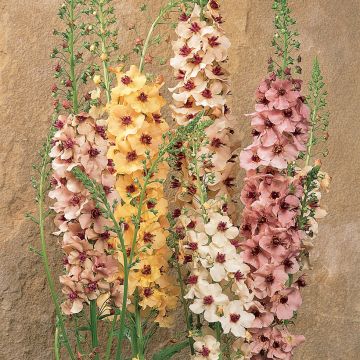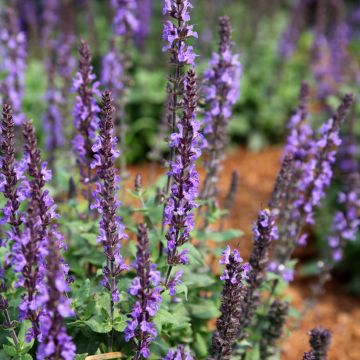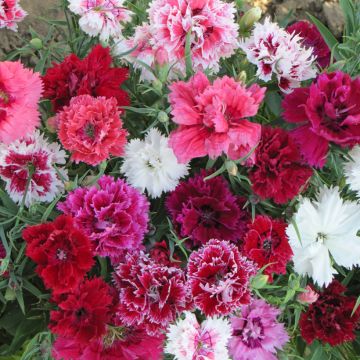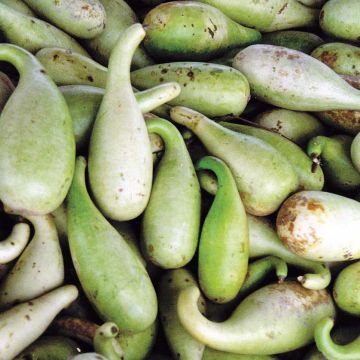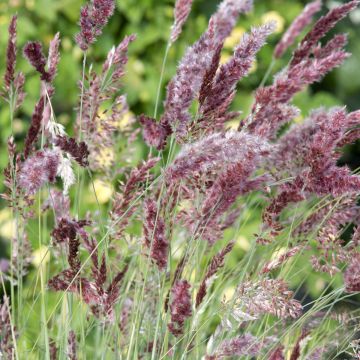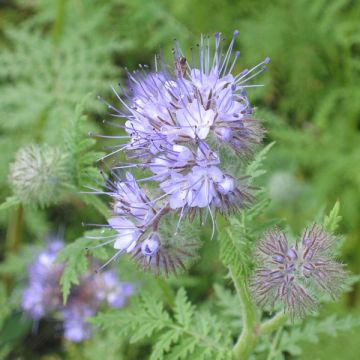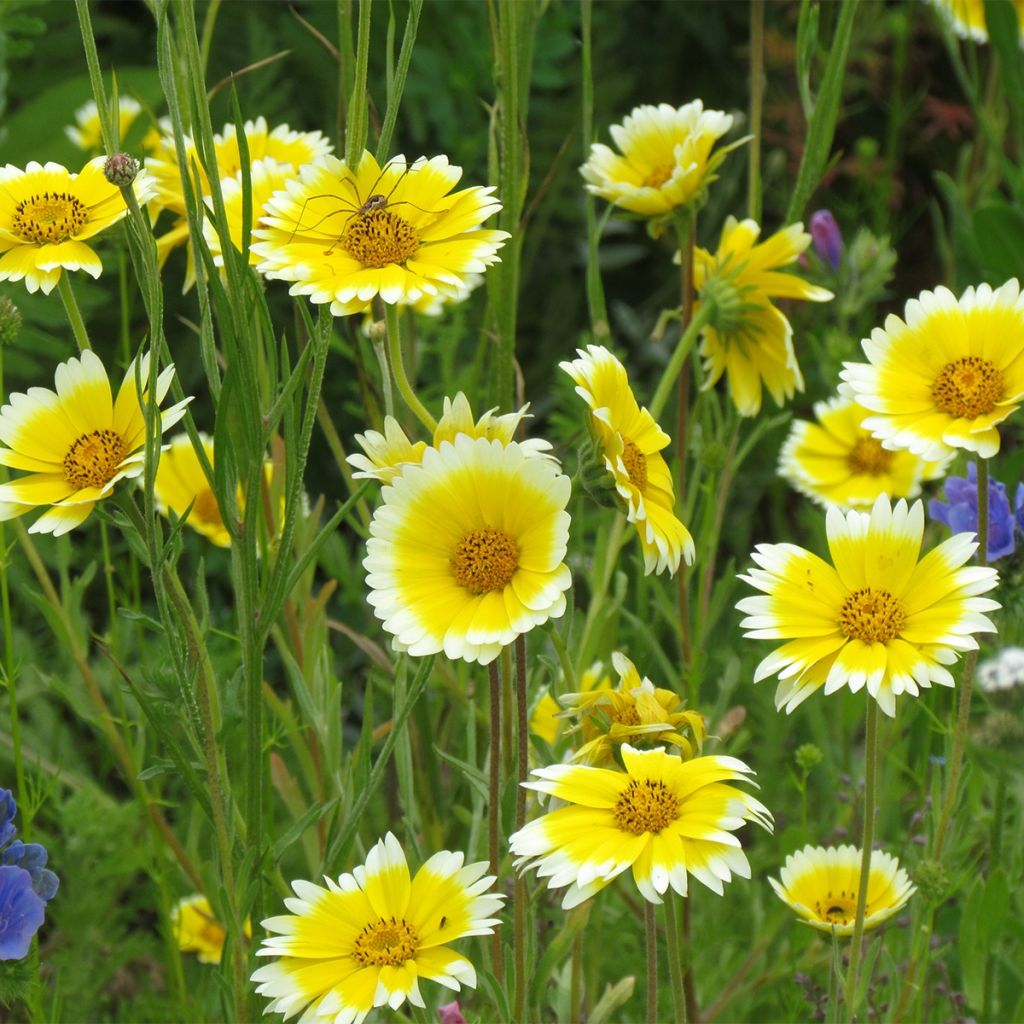

Graines de Layia platyglossa Tidy Tips


Layia platyglossa Tidy Tips - seeds
Layia platyglossa Tidy Tips - seeds
Layia platyglossa Tidy Tips®
Tidy tips, Coastal tidytips
For all the seeds I bought, it didn't produce many flowers!!!
Eugenie L., 04/10/2020
This item cannot be shipped to the selected country
Dispatch by letter from €3.90
More information
Schedule delivery date,
and select date in basket
This plant carries a 6 months recovery warranty
More information
We guarantee the quality of our plants for a full growing cycle, and will replace at our expense any plant that fails to recover under normal climatic and planting conditions.
Seed-only orders are dispatched by sealed envelope. The delivery charge for seed-only orders is €3.90.
Does this plant fit my garden?
Set up your Plantfit profile →
Description
Layia platiglossa 'Tidy Tips' is a small Californian plant that is still relatively unknown to European gardeners, despite its great qualities. Layia is one of the most rewarding annual plants, easy to sow directly in place with no specific requirements in terms of climate and soil, very floriferous, generous to the small fauna of the garden and decorative for long weeks. Its flowers are radiant, with finely toothed yellow cups beautifully edged in white. Sow it alongside blue and orange flowers in your wildflower borders, meadows, sunny borders or rockeries, and let nature do its thing!
Layia platiglossa is an annual plant originating from North America, particularly from western California. In nature, there are two subspecies, a creeping one found on coastal dunes, and an upright type in plains and disturbed areas. It is the latter that is starting to be cultivated in Europe. In the span of a few months, the Layia germinates, grows, flowers abundantly, produces seeds, and then dies. In mild regions, it can germinate in autumn and flower early in spring. Several plants are necessary to obtain seeds. Layia belongs to the aster family, as evidenced by its flower heads.
The 'Tidy Tips' cultivar has been selected for its compact shape. This plant grow to an average height of 30 cm (12in) and initially forms a small clump of elongated basal, lanceolate, linear leaves, 4 to 12 cm (2 to 5in) long, irregularly toothed along the edges, slightly greyish, fairly dark green. It will flower for several weeks from April to September, depending on the sowing date. At the end of leafy, sturdy flower stalks, clusters of flowers develop. Each 'flower' or head, measuring 4 to 5 cm (2in) in diameter, consists of long, bright yellow 'petals', or ligules with white tips, forming a well-opened collar around a more amber centre. This flowering attracts and feeds a large number of pollinating insects. This plant is hardy down to -10°C (14°F). Late summer sowing is possible in mild regions, allowing for earlier flowering. It self-seeds spontaneously in light soils.
Layia Tidy Tips is accessible to all gardeners and deserves to be discovered. This plant is of modest stature, truly easy to grow, particularly well-suited for perennial borders and works well sown randomly among other plants. Planted with California poppies and Nemophila, flax or blue borage, it is perfect in a dry flowering meadow. Also consider planting it with baptisias, centaureas, grasses, sainfoin, ornamental garlic, cornflowers, cosmos, damask nigellas, everlasting flowers...you will promote biodiversity and attract beneficial insects to your ornamental garden or vegetable patch!
Report an error about the product description
Layia platyglossa Tidy Tips - seeds in pictures


Flowering
Foliage
Plant habit
Botanical data
Layia
platyglossa
Tidy Tips®
Asteraceae
Tidy tips, Coastal tidytips
North America
Other Flower seeds A to Z
Planting and care
Sowing:
Sow Layia platyglossa from March to May, depending on the region, or from September to October, preferably directly in place as their roots do not like being disturbed. You can also sow in trays or pots under cover, maintained at 15-20°C (59-68°F), and transplant the young plants as soon as they are manageable. Light promotes seed germination. Autumn sowings should be protected from winter frosts in a cool and bright location. In regions with mild winters, direct sowing in open ground at the end of summer is possible. If you want to sow directly in place in spring in cold regions, wait until the last frosts have passed.
Choose a very sunny location and light, well-drained soil. Prepare the soil well, it should be finely raked, loose, and free of weeds. Mix your seeds with sand and compost in a container, so that you can sow them more thinly. Broadcast sow, cover with a thin layer of light compost and lightly firm with the back of a rake. Regularly water with a watering can, especially during dry periods. Germination usually takes 14-21 days. When the seedlings are large enough to be handled, thin out the plants if necessary and transplant them at a distance of 30 cm (12in).
Cultivation:
Layia platyglossa is undemanding in terms of soil, but it prefers light, well-drained and not-too-rich soils. Plant it in full sun or partial shade. This plant thrives in moist to dry soil in summer, adapting its life cycle and flowering period to the climate: it will flower earlier in the south, even if it disappears in summer. Removing faded inflorescences will encourage more flowers. This hardy and resilient annual will thrive in all regions.
Sowing period
Intended location
-
, onOrder confirmed
Reply from on Promesse de fleurs
Flower seeds
Haven't found what you were looking for?
Hardiness is the lowest winter temperature a plant can endure without suffering serious damage or even dying. However, hardiness is affected by location (a sheltered area, such as a patio), protection (winter cover) and soil type (hardiness is improved by well-drained soil).

Photo Sharing Terms & Conditions
In order to encourage gardeners to interact and share their experiences, Promesse de fleurs offers various media enabling content to be uploaded onto its Site - in particular via the ‘Photo sharing’ module.
The User agrees to refrain from:
- Posting any content that is illegal, prejudicial, insulting, racist, inciteful to hatred, revisionist, contrary to public decency, that infringes on privacy or on the privacy rights of third parties, in particular the publicity rights of persons and goods, intellectual property rights, or the right to privacy.
- Submitting content on behalf of a third party;
- Impersonate the identity of a third party and/or publish any personal information about a third party;
In general, the User undertakes to refrain from any unethical behaviour.
All Content (in particular text, comments, files, images, photos, videos, creative works, etc.), which may be subject to property or intellectual property rights, image or other private rights, shall remain the property of the User, subject to the limited rights granted by the terms of the licence granted by Promesse de fleurs as stated below. Users are at liberty to publish or not to publish such Content on the Site, notably via the ‘Photo Sharing’ facility, and accept that this Content shall be made public and freely accessible, notably on the Internet.
Users further acknowledge, undertake to have ,and guarantee that they hold all necessary rights and permissions to publish such material on the Site, in particular with regard to the legislation in force pertaining to any privacy, property, intellectual property, image, or contractual rights, or rights of any other nature. By publishing such Content on the Site, Users acknowledge accepting full liability as publishers of the Content within the meaning of the law, and grant Promesse de fleurs, free of charge, an inclusive, worldwide licence for the said Content for the entire duration of its publication, including all reproduction, representation, up/downloading, displaying, performing, transmission, and storage rights.
Users also grant permission for their name to be linked to the Content and accept that this link may not always be made available.
By engaging in posting material, Users consent to their Content becoming automatically accessible on the Internet, in particular on other sites and/or blogs and/or web pages of the Promesse de fleurs site, including in particular social pages and the Promesse de fleurs catalogue.
Users may secure the removal of entrusted content free of charge by issuing a simple request via our contact form.
The flowering period indicated on our website applies to countries and regions located in USDA zone 8 (France, the United Kingdom, Ireland, the Netherlands, etc.)
It will vary according to where you live:
- In zones 9 to 10 (Italy, Spain, Greece, etc.), flowering will occur about 2 to 4 weeks earlier.
- In zones 6 to 7 (Germany, Poland, Slovenia, and lower mountainous regions), flowering will be delayed by 2 to 3 weeks.
- In zone 5 (Central Europe, Scandinavia), blooming will be delayed by 3 to 5 weeks.
In temperate climates, pruning of spring-flowering shrubs (forsythia, spireas, etc.) should be done just after flowering.
Pruning of summer-flowering shrubs (Indian Lilac, Perovskia, etc.) can be done in winter or spring.
In cold regions as well as with frost-sensitive plants, avoid pruning too early when severe frosts may still occur.
The planting period indicated on our website applies to countries and regions located in USDA zone 8 (France, United Kingdom, Ireland, Netherlands).
It will vary according to where you live:
- In Mediterranean zones (Marseille, Madrid, Milan, etc.), autumn and winter are the best planting periods.
- In continental zones (Strasbourg, Munich, Vienna, etc.), delay planting by 2 to 3 weeks in spring and bring it forward by 2 to 4 weeks in autumn.
- In mountainous regions (the Alps, Pyrenees, Carpathians, etc.), it is best to plant in late spring (May-June) or late summer (August-September).
The harvesting period indicated on our website applies to countries and regions in USDA zone 8 (France, England, Ireland, the Netherlands).
In colder areas (Scandinavia, Poland, Austria...) fruit and vegetable harvests are likely to be delayed by 3-4 weeks.
In warmer areas (Italy, Spain, Greece, etc.), harvesting will probably take place earlier, depending on weather conditions.
The sowing periods indicated on our website apply to countries and regions within USDA Zone 8 (France, UK, Ireland, Netherlands).
In colder areas (Scandinavia, Poland, Austria...), delay any outdoor sowing by 3-4 weeks, or sow under glass.
In warmer climes (Italy, Spain, Greece, etc.), bring outdoor sowing forward by a few weeks.


































